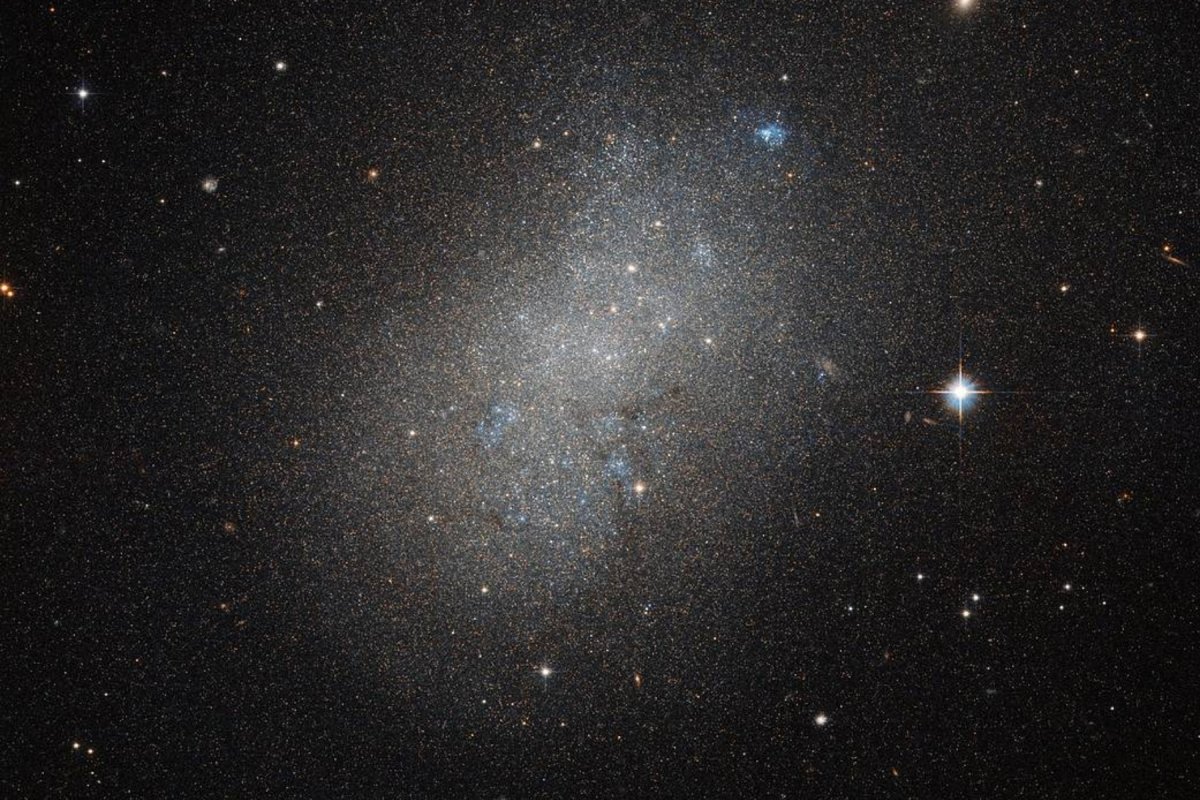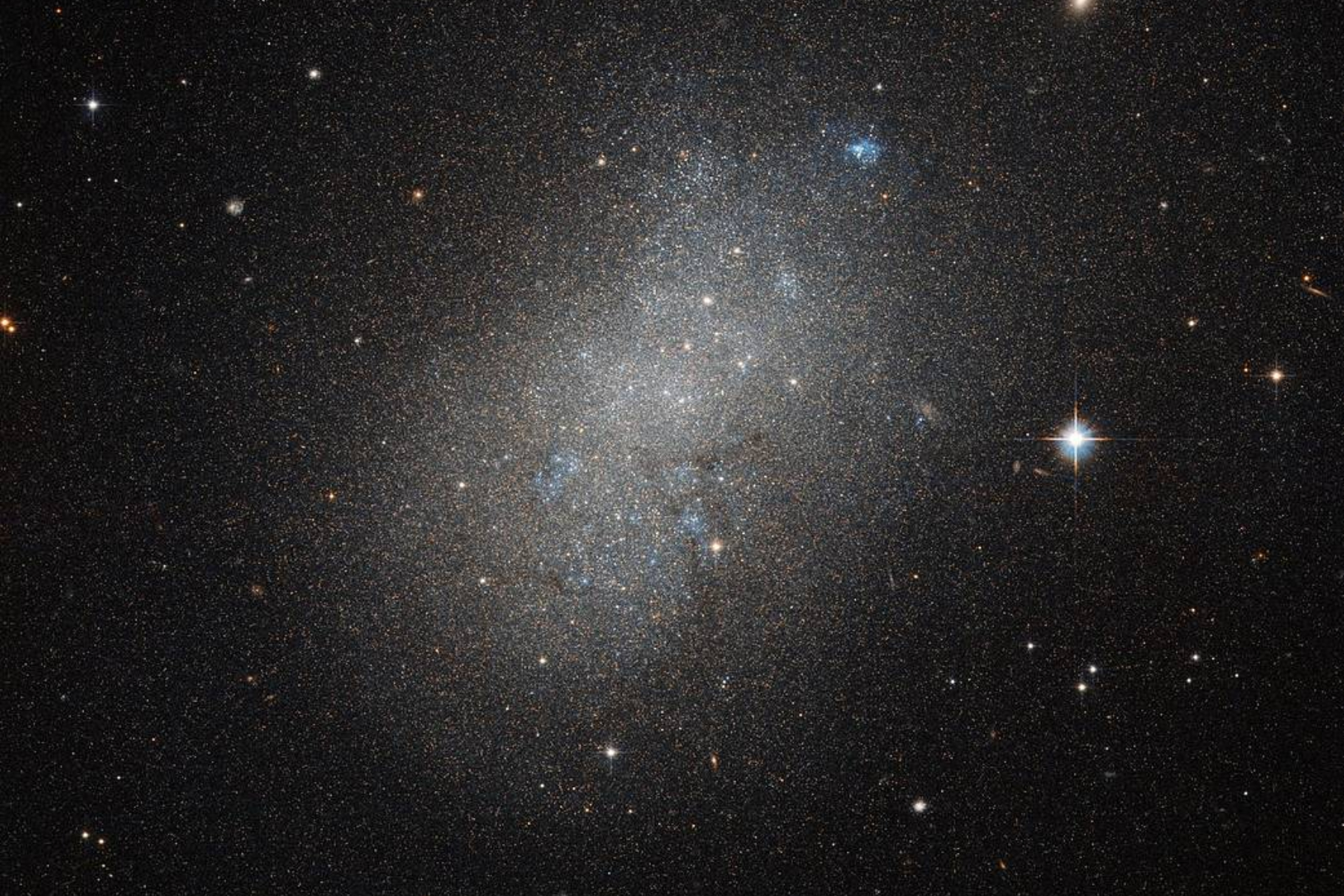A new galaxy that shouldn’t exist has been discovered hiding in plain sight in images taken by the James Webb Space Telescope.
The galaxy is a dwarf galaxy, named PEARLSDG, which was spotted as astronomers observed a patch of other galaxies, with the dwarf galaxy appearing in an area of space where the scientists weren’t expecting to see anything.
PEARLSDG had some strange properties that the scientists did not expect, as it wasn’t forming any new stars, according to a new paper in the Astrophysical Journal Letters.
NASA, ESA, CSA, Jake Summers ASU), Jordan C. J. D’Silva UWA), Anton M. Koekemoer STScI, Aaron Robotham (UWA and Rogier Windhorst (ASU
Dwarf galaxies are much smaller than galaxies like the Milky Way, which contains between 200 to 400 billion stars: dwarf galaxies usually only contain between 1,000 and 100 billion stars. These smaller galaxies often orbit their larger neighbors, with the Milky Way itself being orbited by around 20 dwarf galaxies, including Triangulum II and the Small Magellanic Cloud. Their formation was thought to be strongly influenced by interactions with other, larger galaxies.
PEARLSDG, however, did not have the usual characteristics of a dwarf galaxy, as it wasn’t interacting with a nearby galaxy, but also wasn’t forming new stars. Therefore, scientists think it might be a rare case of an isolated quiescent galaxy, which are galaxies that have stopped producing new stars.
“These types of isolated quiescent dwarf galaxies haven’t really been seen before except for relatively few cases. They are not really expected to exist given our current understanding of galaxy evolution, so the fact that we see this object helps us improve our theories for galaxy formation,” paper co-author Tim Carleton, an assistant research scientist at Arizona State University, said in a statement. “Generally, dwarf galaxies that are out there by themselves are continuing to form new stars.”
Before this discovery, scientists had thought that isolated galaxies would keep making new stars, or would eventually interact with a larger galaxy like the Milky Way. PEARLSDG appears to fulfill neither of these assumptions.
Additionally, some individual stars are visible in the JWST images of PEARLSDG, making it one of the furthest galaxies to be seen in this kind of detail at 98 million light years away. The Milky Way itself is around 100,000 light-years across, while Andromeda is roughly 2.5 million light-years away from us. Spotting these individual stars was possible thanks to JWST’s Near-InfraRed Camera (NIRCam), which has extremely high angular resolution and sensitivity that allows it to pick up minute details from extremely far away.
These individual stars were also found to be some of the most distant of their type ever observed. Additionally, the high level of detail that the JWST was able to spot in this galaxy in ultraviolet, optical and infrared wavelengths, alongside spectroscopic data from the DeVeny Optical Spectrograph on the Lowell Discovery Telescope in Arizona, archival imaging from NASA’s Galex and Spitzer space telescopes, and ground-based imaging from the Sloan Digital Sky Survey and the Dark Energy Camera Legacy Survey, allowed the scientists to determine that it was no longer producing new stars. New stars have a very specific color signature, and this color signature was seen to not be present in PEARLSDG.

ESA/Hubble & NASA
This data also showed that PEARLSDG was not moving in any way that indicated an association with another larger galaxy, making it truly isolated.
“This was absolutely against people’s expectations for a dwarf galaxy like this,” Carleton said.
These findings imply that astronomers have more to discover about dwarf galaxies, and how they form and change with time. It also suggests that there may be more isolated galaxies like this one hiding out in the universe, waiting to be discovered.
Do you have a tip on a science story that Newsweek should be covering? Do you have a question about space? Let us know via [email protected].
Uncommon Knowledge
Newsweek is committed to challenging conventional wisdom and finding connections in the search for common ground.
Newsweek is committed to challenging conventional wisdom and finding connections in the search for common ground.

Dr. Thomas Hughes is a UK-based scientist and science communicator who makes complex topics accessible to readers. His articles explore breakthroughs in various scientific disciplines, from space exploration to cutting-edge research.








